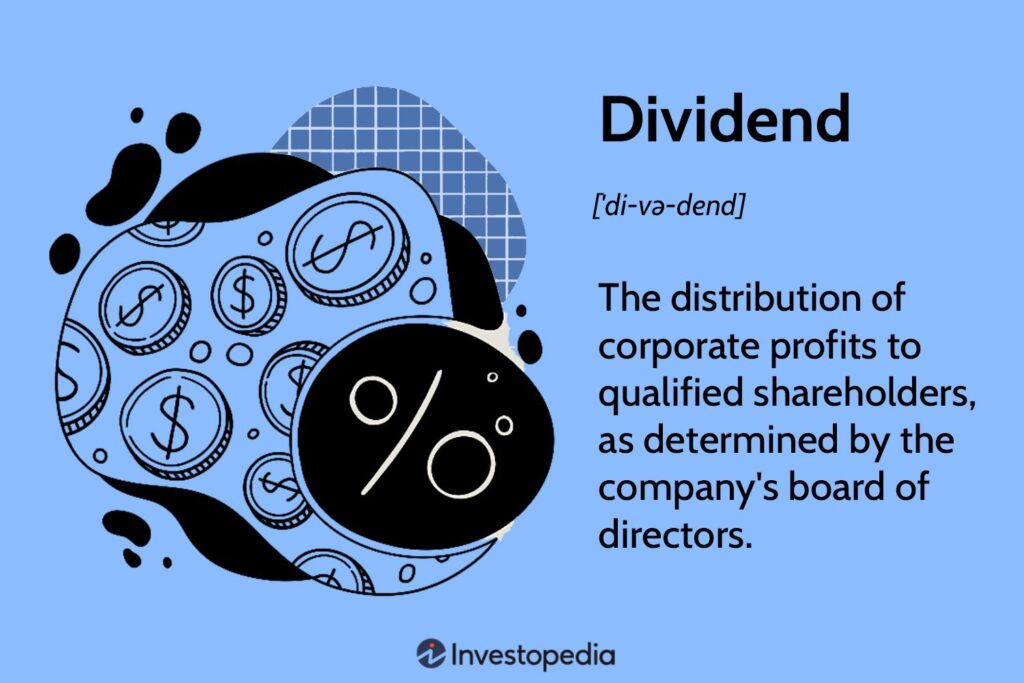Introduction
Dividend stocks are an attractive investment option for those seeking passive income from the stock market. When you invest in dividend-paying companies, you become a shareholder and receive a portion of the company’s profits in the form of dividends. In this blog post, we will explore what dividend stocks are, the advantages and disadvantages of investing in them, successful investors who have benefited from dividend stocks, steps to start investing in dividend stocks, and a star rating based on three key criteria: Ease of Entry, Income Potential, and Long-term Sustainability.
What are Dividend Stocks?

Dividend stocks are shares of publicly traded companies that distribute a portion of their earnings to shareholders as dividends. These dividends are typically paid on a regular basis, such as quarterly or annually. Dividend-paying companies are often well-established, financially stable, and have a history of steady profits. Learn more about Dividends from Investopedia.
Steps to Start Investing in Dividend Stocks
1. Research Dividend-Paying Companies
Identify well-established companies with a history of consistent dividend payments and financial stability.
2. Open a Brokerage Account
Choose a reputable brokerage platform that allows you to buy and sell dividend stocks. Learn more about Brokerage Accounts on Investopedia.
3. Allocate Funds for Investment
Decide on the amount of capital you want to invest in dividend stocks as part of your overall investment strategy.
4. Diversify Your Portfolio
Invest in a variety of dividend-paying companies across different industries to minimize risk. Learn more about Diversification from Fidelity.
Diversification is the practice of spreading your investments around so that your exposure to any one type of asset is limited. This practice is designed to help reduce the volatility of your portfolio over time.
Fidelity.com
5. Reinvest Dividends (Optional)
Consider enrolling in a dividend reinvestment plan (DRIP) to automatically reinvest your dividends and acquire more shares.
Advantages of Dividend Stocks
- Passive Income Stream:
Dividend payments provide a consistent stream of passive income without the need for active involvement. - Portfolio Diversification:
Dividend stocks can be a valuable addition to a diversified investment portfolio, offering a mix of income and growth potential. - Potential for Growth:
Some dividend-paying companies may also experience stock price appreciation over time, leading to overall portfolio growth. - Dividend Reinvestment:
Many companies offer dividend reinvestment plans (DRIPs), allowing shareholders to reinvest dividends to acquire additional shares.
Disadvantages of Dividend Stocks
- Market Volatility:
Like all stocks, dividend stocks can be subject to market fluctuations, which may affect the value of your investments. - Dividend Cuts:
Companies may reduce or eliminate dividends during challenging economic periods or financial difficulties. - Limited High-Yield Options:
High-yield dividend stocks may come with higher risk, and not all companies offer substantial dividend yields.
Successful Investors in Dividend Stocks
- Warren Buffett: The renowned investor and CEO of Berkshire Hathaway has long been an advocate of dividend investing.
- John Bogle: The founder of Vanguard Group emphasized the importance of dividend stocks in a balanced investment strategy.
Conclusion
Dividend stocks offer an avenue for passive income and portfolio growth, making them an appealing choice for long-term investors. By carefully selecting dividend-paying companies with a history of stability and growth, investors can create a reliable stream of passive income while participating in the stock market’s potential for wealth accumulation.
-
Ease of Entry5/5 ExcellentAccessible through brokerage accounts.
-
Income Potential2/5 Not GoodDependent on dividend yields and market performance.
-
Long-term Sustainability3/5 GoodHistorical stability of established dividend-paying companies.
Pros
- Consistent passive income with potential for portfolio growth.
- Diversification and reinvestment options for enhanced returns.
Cons
- Subject to market volatility and potential dividend cuts.
- Limited high-yield options with higher risk.














